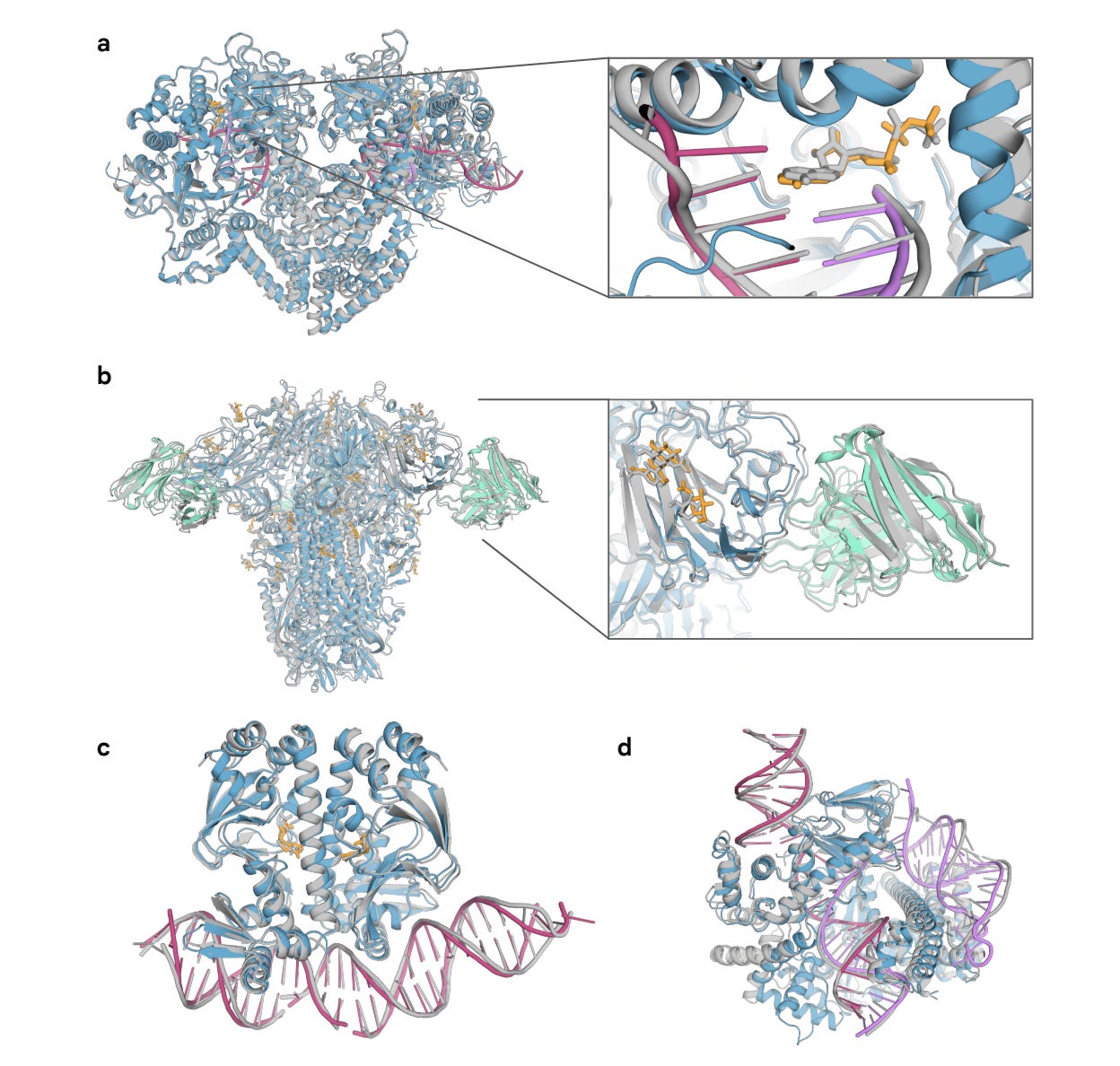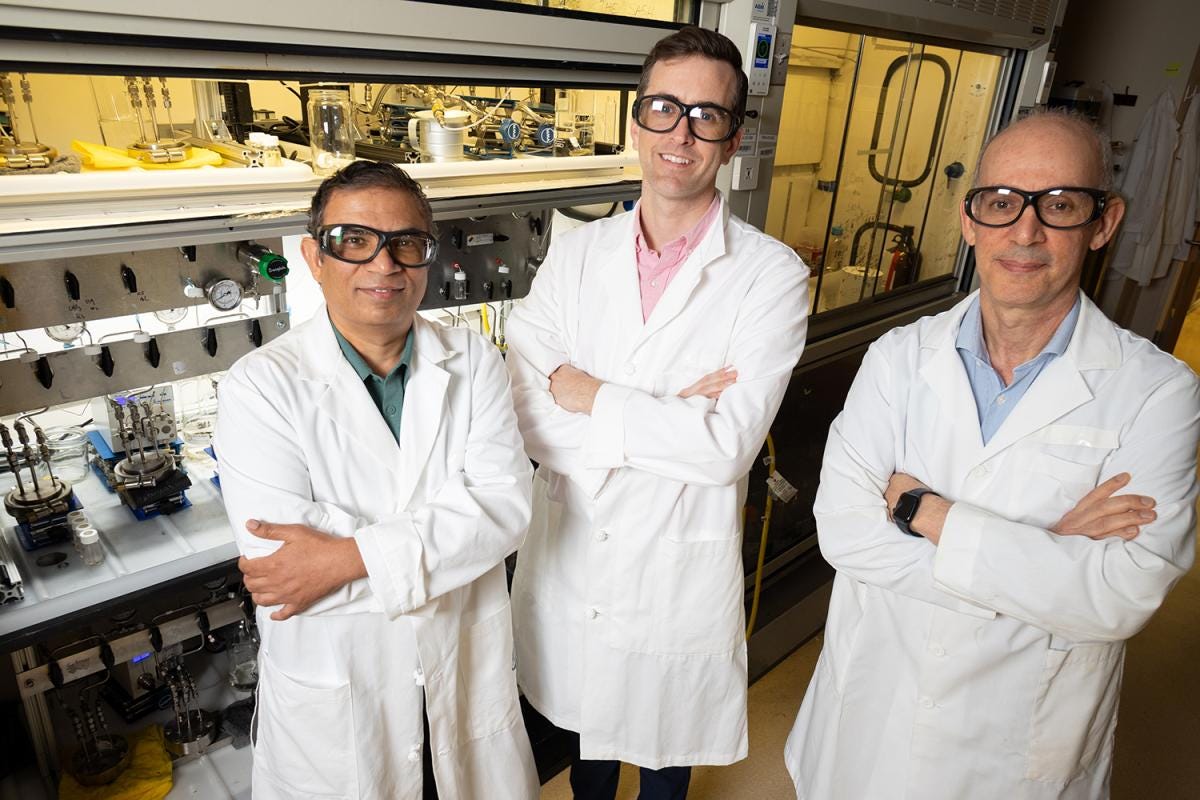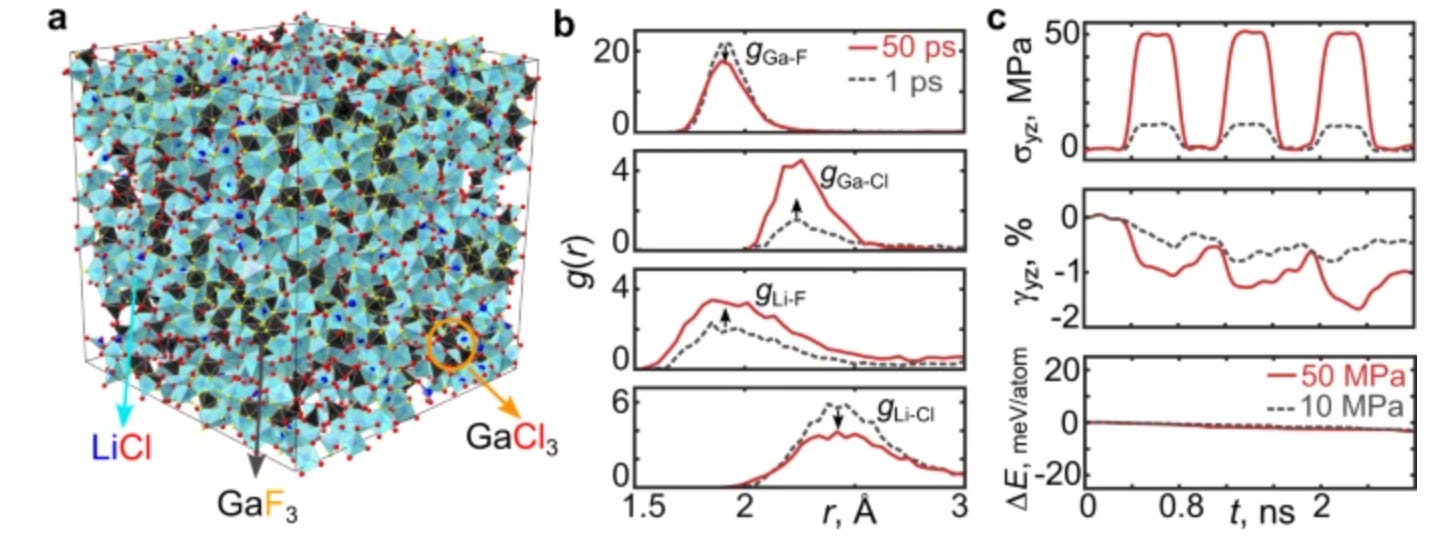AlphaFold3; Eric Schmidt's initiative; Sanofi's $1bn bet | AI4Sci Insights
Providing context and insights beyond the news headlines
You never know when or where AI and Science would converge
1/ What’s new with AlphaFold3
AlphaFold was known for cracking the ‘holy-grail’ challenge of protein folding — aka, given a protein’s sequence (1d), can you predict its 3d structure. Now, its latest update claim to go beyond protein and can now also predict ligand-protein interaction, which is a critical step in drug discovery. it also claim to be able to predict nucleic acids, which would be quite relevant for cutting edge healthcare innvoations such as mRNA vaccines.
Context: as a computational method, alphafold2 was considered a Nobel Prize worthy achievement, because it matches, for the first time, the accuracy of experiment. Which means the cost of biology research just dropped by orders of magnitudes. However, for drug discovery, understanding the structure of protein is just the first step. The next step is understand “if i put a drug on the protein, how would the drug work”. The update of AF3 is to address this.
2/ Eric Schmidt Launches new AI for Science initiative
This new research institute is headed by Andrew White of University of Rochester, and will be focusing on AI’s application in biology as a start.
Context: Eric Schmidt has been a strong advocate for AI for Science, having previously pledged 140 million USD for AI for Science scholarship. He also gave a great speech at MIT on why AI is an inevitable path for future science research. https://www.technologyreview.com/2023/07/05/1075865/eric-schmidt-ai-will-transform-science/
3/ BioMap secures contract with Sanofi worth up to $1bn
BioMap, co-founded by Robin Li (founder of Baidu) in 2020, secured a contract from Sanofi to develop advanced AI models and protein Large Language Models that will enable biologics design and multiparametric optimization.
Under the terms of the agreement, BioMap will receive an upfront cash payment and near-term payments for reaching module development milestones from Sanofi. BioMap will be eligible to receive payments of over $1 billion based on achievement of pre-clinical development, clinical development, regulatory, and commercial milestones.
Context: Sanofi is arguably the most active proponent of AI in drug discovery, having previous announced that it is ‘all-in’ on AI. Baidu and Robin Li is very active in the crowded LLM space. Using LLM to do biology research has been a heated debate, as whether language is the ultimate representation of knowledge is still unclear. Baidu’s LLM however, is met with mixed review (at best) when launched.
4/ Insilico Gets $80m upfront for AI-designed drug
Under the terms of the agreement, Insilico granted Exelixis an exclusive, worldwide license to develop and commercialize ISM3091, and other USP1-targeting compounds, in exchange for an upfront payment to Insilico of $80 million anticipated in the third quarter 2023. Insilico is also eligible to receive future development, commercial, and sales-based milestone payments, as well as tiered royalties on net sales. “ISM3091 is the third clinical-stage program made possible by Chemistry42, Insilico Medicine’s generative AI platform for small molecule drug discovery,” said Alex Zhavoronkov, Ph.D., founder and CEO of Insilico Medicine.
Context: Insilico is one of the most active AI Drug Discovery startup globally, who also recently filed for IPO. Its 2022 revenue is $30m, which mean its 2023 growth would look quite well with this new deal.
5/ Meta demoed real-time decoding of images from brain activity
Using magnetoencephalography (MEG), a non-invasive neuroimaging technique in which thousands of brain activity measurements are taken per second, Meta showcase an AI system capable of decoding the unfolding of visual representations in the brain with an unprecedented temporal resolution.
Context: despite the struggles last year (VR failure, layoffs, market cap crash, executive leaves etc.), Meta is actually doing suprisingly well in the AI war, with Llama, Segament Anything, etc. Major respect to LeCun.
6/ ExxonMobil and Gerogia Tech: AI Predictions Could Dramatically Reduce Energy, Water Use in Oil Refining
A new kind of polymer membrane created by researchers at Georgia Tech could reshape how refineries process crude oil, dramatically reducing the energy and water required while extracting even more useful materials. They also have created artificial intelligence tools to predict the performance of these kinds of polymer membranes, which could accelerate development of new ones.
Context: the initial separation of crude oil components is responsible for roughly 1% of energy used across the globe, so to save of energy here will have a big impact. Beyond this usecase, material science actually plays a fundemental role is most aspects of our life, such as turning sea into fresh water. But developing a commercial viable new material is extremely challenging, more so than developing a new drug. As an example, despite the trillions dollar worth of EVs, and the urgent need for innovation, the battery material system we use is still not very different from the 1990s. Many is turning to AI to expedite new material discovery. CATL for example, has been quite active in adopting AI for new anode materials research https://onlinelibrary.wiley.com/doi/abs/10.1002/adfm.202303936 .
7/ CEDER Groups new research unveils a key feature of Solid-state battery using AI
Soft clay-like Li-superionic conductors, integral to realizing all-solid-state batteries, have been recently synthesized by mixing rigid-salts. Here, through computational and experimental analysis, researchers clarify how a soft clay-like material can be created from a mixture of rigid-salts.
Battery functions on atomic level. Usually simulating it accurately requires quantum mechanics compuation (such as DFT-MD), which are expensive and slow. DFT-MD without a HUGE supercomputer, will struggle to simulate even 1000 atom for 0.1ns. In this work, a deep learning neural network is trained to subsitute the DFT part and the DL-MD simulated 10,000 atoms for 2ns, at DFT accuracy.
Context: Gerbrand Ceder is one of the most known name in the battery world. He is also the Samsung Distinguished Chair in Nanoscience and Nanotechnology Research at UC Berkeley. He started the Material Project, analogous to the human genome project, which among other things, created a huge database of material structure and properties (think of this as the ImageNet of material science). Almost all AI companies in the material science space uses this work one way or another.
Disclaimer: This page contains links and summaries of articles that have been curated from various sources. The curator makes no claims as to the accuracy, completeness, or reliability of the information provided in the original articles. Links are provided for reference and convenience only. Readers should evaluate the source and credibility of any content referenced in this newsletter and proceed at their own discretion.







